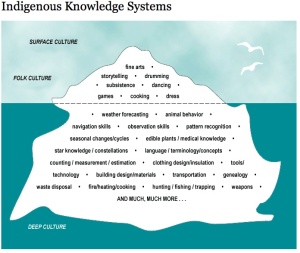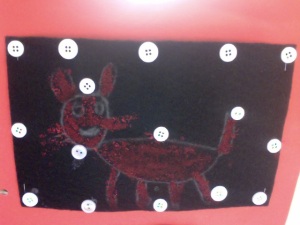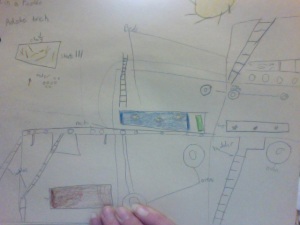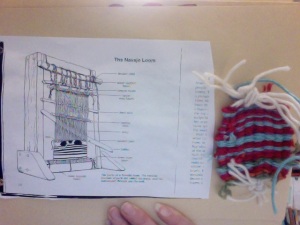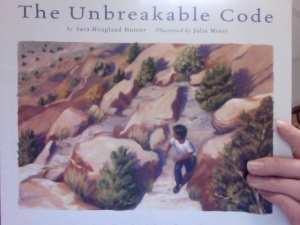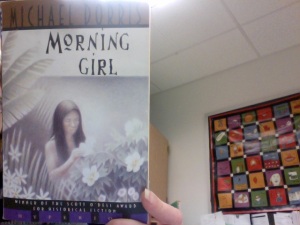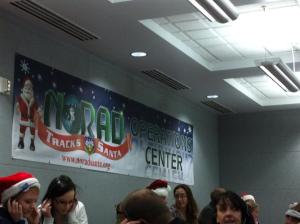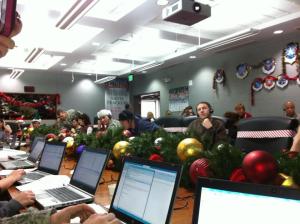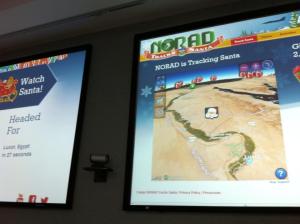Home » 2014
Yearly Archives: 2014
Reflections on our Native Americans Unit
We just finished our first social studies unit, Native Americans. I like to spend some time reflecting on the unit: things that went well and things that I might change the next time that I teach the unit. I wanted to make these reflections public because it is a great opportunity for families to step inside our classroom to see what we did during our social studies time.
Beringia (Land Bridge):
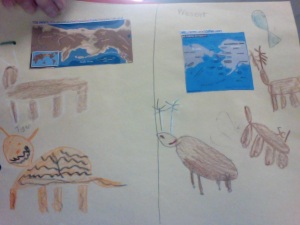
http://www.nps.gov/bela/historyculture/beringia.htm
Most of my content knowledge about Native Americans is rooted in the Northwest. I lived in Alaska for three years. Becoming a certified teacher in Alaska meant that I needed to take two special courses for certification: 3 credits in multicultural education and 3 credits in Alaskan studies. That, combined with living in the “bush”, gave me some background knowledge to begin the unit on Native Americans.
Looking back, I am glad that I made the decision to begin in the Northwest. Having that background knowledge and depth of content gave me the language and experience to get the students “hooked” into this unit. It also made sense to begin by answering the question: How did the Native Americans get here? (This, I believe is an important question to consider given that our next unit is about Explorers.) As we talked through the different regions of North America, the flow and sequence felt right because we could find connections from different regions and discuss how some of those connections could be traced back to the idea of how many Native Americans entered into North America.
This iceberg chart was a staple in my studies and indigenous curriculum in Alaska. I tried to incorporate it as best as I could throughout the unit on Native Americans to show a complete picture of Native American groups. It was easiest for me to do with the Northwest tribes.
Northwest:
In the Northwest we talked about homes, the use of natural resources–especially salmon, food preparation, cultural aspects (button blankets, totem poles).
Southwest:
We really focused on the Navajo of the Southwest. We created our own mini-samples of Navajo weavings, created clay pottery (uses of the earth), homes, and natural resources.
Plains:
In the Plains we talked about the idea of being nomadic, the buffalo, homes, and Crazy Horse. The story about Crazy Horse was inspiring, and students should know about the monument and vision being built in his honor. (Ironically, it is very close in proximity to Mount Rushmore.)
http://crazyhorsememorial.org/
Eastern Woodlands:
The Eastern Woodlands focused on natural resources and homes. (We did not have as much time to focus on this region, but I am hopeful that we will return to some of these ideas when we teach Pennsylvania.)
Legends:
This is an aspect of the unit that married well with reading. We read numerous legends from each region as a way to learn more about the people and their culture. We came to identify common elements in legends: hero, mythical qualities, cultural aspects, elements of truth, and a meaning to the story (something that we should learn). Some of the legends (a sample list) of the legends we read included:
*The Raven
*Gift of the Sacred Dog
*Clamshell Boy
*Ka’ha’si and the Loon
*Legend of the Indian Paintbrush
*Turquoise Boy
It was great to see how students made connections between various legends. As part of each region, students had to select a legend to analyze the components and record in their reader’s notebook. They were great activities for teaching text-to-text connections, story structure, and character traits.
Research:
Throughout this unit, students would conduct research each time we entered a new region. They read non-fiction material to identify and record pertinent information about that region. This was great practice for learning how to capture important notes/points and how to put things into your own words. Students learned how to utilize the structure of non-fiction books in order to locate information more easily.
2 sides to every story:
I felt that it was important to present some heavy issues during our unit on Native Americans. It was important to break stereotypes and share the complexity of issues that face Americans…especially present day. We captured this through various activities. We shared how the goal is not striving for right or wrong answers–rather the goal is seeking to understand multiple points of views in order to have a deeper understanding of issues facing Native Americans. We began in the Northwest with the Pebble Mine project. Students read a very kid-friendly article about the pros and cons of moving forward for this project. Students learned to read critically: reading an article multiple times for multiple purposes. In case you would like to know more about the project, here is a link (I did not share this link with the class.) http://apecsec.org/pebble-mine-pros-and-cons/
In the Southwest, we talked about the Navajo Codetalkers. The timing of that lesson was right around Veteran’s Day…making it such a relevant connection. Students really connected with that lesson and got emotional. We listened to this audio only of this video (https://www.youtube.com/watch?v=YZuOiqo1glk)–we listened for some of the key points that connected back to this speech given by President Bush (https://www.youtube.com/watch?v=2JPIeyBPum0).
We focused on the life of Crazy Horse in the Plains and we discuss the Trail of Tears for the Eastern Woodlands/Plains.
Students made fry bread and we discussed how it is such an important cultural symbol for Native Americans as well as the nutritional concerns related to this food. http://www.smithsonianmag.com/arts-culture/frybread-79191/?no-ist
(I did not share this article with the students, but I did present both sides of the story concerning the issues surrounding fry bread.)
Culmination:
We culminated this unit by having students read various articles to learn how Native Americans contributed to the lives of people in North America and around. Students LOVED learning how things today such as chocolate, peanuts, corn, potatoes, tug-of-war, lacrosse, popcorn, toothbrushes,….and SOOOO much more are rooted with Native Americans. I am proud that we spent time discussing these important contributions. Next time I teach this unit, I need to make sure that this is integrated throughout the unit and not highlighted solely at the end of it.
Read-aloud:
We ended this unit with the read-aloud, Morning Girl. This was a perfect way to culminate the unit and propel us into the unit on explorers. Michael Dorris shares a story about a Taino brother and sister growing up on a Bahamian island in 1492. The story captures the realities of life between siblings. It was a great way for our class to make connections with the book and get invested with the characters. (Our reading focus for this book was looking and analyzing the two main characters.) The last couple of pages of the book describes Christopher Columbus’s encounter—yet, it is only in the epilogue that we hear Columbus’s voice through a brief journal entry. For our students, hearing Columbus’s voice, and how he planned to make some of the Taino his servants provided enough intrigue for students to ask why he would write that. Those questions are answered in our next unit, explorers.
Teaching Geography through NORAD Tracks Santa
I had a “come full circle” experience a couple of years ago. As a child, I would watch the evening news to see where Santa was delivering packages on Christmas Eve. In 2012 and 2013, I was an official Santa Tracker as part of NORAD’s mission: NORAD Tracks Santa.
I decided to share this experience because this year many students in my classroom are asking questions about Santa. I share my experience with them as a way to answer their wonderings.
To learn more about the history of NORAD Tracks Santa or to explore their site, you can visit the webpage:
In 2012, I was helping to answer more than 6,000 phone calls a minute! In 2013, I was answering emails. My favorite memory was answering a call from a woman in England who was inquiring about Santa’s location. It wasn’t too much longer until he was arriving in Europe so I shared that her children should hurry up and get to bed. She answered, “Oh I don’t have any children! I just love to follow this myself!” 🙂 My favorite email exchange was from a military family in Oman. It was a great opportunity to say thank you for your service.
From a teacher’s standpoint, this is a great way to teach geography at this time of year! There are Santa cams set up around the world that showcase Santa flying past iconic symbols such as the Taj Mahal, Great Pyramids, and Eiffel Tower. It shows Santa’s current location as well as where he is headed next. When I think about our upcoming unit on Explorers–this could be a fun way for families to have children become more familiar with the countries around our world!
Centre-Teacher Writers
https://ed.psu.edu/news/news-oct-dec-2014/teacher-writers
Here is an article written by one of the co-facilitators of the Centre-Teacher Writers Group. Dr. Whitney is also one of my committee members for my dissertation. I joined this group in 2008, and it has been instrumental in my growth as a writer. Being involved with this group transformed my practices as a writer and writing teacher.
The Greater Gift
Birthdays and holidays can make some of us think about gift giving. Here is an alternative thought about the gifts we give that I will be sharing tonight at our PTO meeting.
It seems that since having my daughter, life has added another lens for me to look through. And with the period of time being out of the classroom, it seemed that life had slowed (just a bit) for me to have a more intense time of reflection…personal reflections, professional reflections, reflections for my daughter.
When I think about what I hope for her, one of my strongest desires is that she grows up knowing that she can have a positive difference in this world. That she matters. …Which leads to the book idea.
The Greater Gift is the name of the book. It seems like our society is becoming more and more a “me” society…that some people feel that they are entitled to. I see TV shows that exploit extravagance with children…fancy pageants, lavish birthday parties. …It’s the birthday that I want to hone in on. (Now, my duaghter will grow up having birthday parties, and I will buy her presents) …But, I really do not want the focus to be… “What will I get?” Rather, I want her to grow up believing, another year has passed, “What have I given?” “What contributions have I made in this world?” You see, receiving gifts are nice, but you are the greater gift. Because you were born, the world is a better place.
The book hopes to establish a mindset of lifelong giving back. It will be a compilation of students’ ideas, photographs, drawings, and stories. If the book is written to inspire children to reach out in their communities, then it’s the children that would make the most sense to be the principle contributors to the book…they would most likely have the best ideas! Plus, it would reinforce the idea that they have a voice to be heard.
This service learning project, The Greater Gift, comes at a time when writing is a focus in our school district. It will be a great way to merge writing for a purpose. What a motivation for students in our school community to see a book that they have written to actually go to publication! Funds raised through this book endeavor will be used to create a grant to support student projects.
Writing: Product or Process
This is going to be one of those “controversial” journal entries where everyone will have their own opinion on writing—including me. So with that, my disclosure is that this entry, like every other one, is strictly my opinion, and doesn’t mean that one idea is better than another person’s idea. Another disclosure will be that this journal entry is raw…meaning that the grammar may not be just right or I probably could have chosen better words or organization. But for this entry, it is the thoughts that I do not want to lose—and this is being written during my dissertation writing time—so I cannot spend much time “polishing” this piece. Yet, so much is swimming through my mind from yesterday’s writing training that I felt like I needed to capture what is on my mind.
It’s hard even the morning after to try to remember all I wanted to remember from yesterday, but some things have stuck with me. Listening to our guest speaker, I felt like I really connected with what she was saying—largely because I see myself as a writer now and understand the difficulties that come with writing. Maybe the best way for me to frame my thoughts is to share how I taught writing when I didn’t see myself as a writer and how I teach writing now that I see myself as a writer.
My pre-writing days (which has been most of my life):
I think I saw writing as a series of activities. There were all of the grammatical skills to teach. I would primarily teach all of those skills in isolation. There are the six traits of writing: ideas and content, organization, voice, word choice, sentence fluency, and conventions. Aren’t they all tidied up in a neat package where you can do a whole series of lessons on each of these six traits! Then there is the writing process. I think I got it that writing went through a process, but I didn’t understand the real process writing goes through. I took the writing process through a series of activities again: prewriting, drafting, revising, editing, publishing.
When I came to this district, I learned quickly to let go of the isolated concepts and the “story cycle.” Yes, it made sense. The reality of writing is that we do not “publish” every piece of writing. Doing that actually slows down the flow of writing and writing fluency.
But now I found myself having no “framework” for knowing how to teach writing. I didn’t have confidence in myself to know how to do it well. So I leaned on the district’s materials to help guide me, to help give me a framework to provide more authentic writing experiences. I was even able to just look in the book and restate the author’s words….heck, this author is MUCH more experienced than me as a writing teacher so she must know what she’s doing! I was using mentor texts to show students “ideals” of writing. I had anchor charts to help students through a more organic process of writing. Teaching writing felt good again.
Becoming a writer:
Sometimes change in people is obvious. Most times it evolves over years. Before I share how my writing instruction changed, I need to share how I personally viewed writing. I hated it! It was hard, and I definitely did not see myself as a writer. In fact, it paralyzed me so much that it took me ten years to finally get the courage to pursue my PhD because I was so fearful of the writing phase of the doctoral process. I would look at people around me and be in awe at how they can just come up with ideas. How could their fingers type so quickly across the keyboard when I struggled so much to just get that first word down on a piece of paper?!? I realized that my desire to get my degree was too great that I had to find a way to overcome my fear. I joined a teachers’ writing group back in 2008 with the goal of learning how to write. I needed to know the “tools” and “strategies” that writers use in order to complete a task. I was so off base back then by thinking those things. …and at that time, I had NO IDEA of how overcoming my fears as a writer would impact me as a writing teacher.
I began working closely with a writing professor in that teachers’ writing group, and I signed up to take her fall semester writing course. It was at that point that I began to learn at how “messy” writing really is. She gave us permission to “just write.” Don’t think too much about the structure or “rules”—JUST WRITE! I was still paralyzed because “just writing” meant that it was sloppy; it wouldn’t sound polished. People would hear my words and think that I was stupid. It took a couple of years being in that writing group to begin to feel comfortable to share my work with other people. Writing is such an emotional process.
Writing gets tough…
I didn’t realize how tough writing really was until two-three years ago when I began my writing comprehensive exams (and now my dissertation). Oh my goodness! I am not looking for pity, but let me tell you, it is BY FAR, the hardest thing that I have done in my life! I have a great writing partner, and together we have shared many moments of frustration, tears, anger, and moments of celebrations. Writing is SUCH an emotional process. IT IS HARD! It is messy! You write words one day only to “throw them away” the next day. Sometimes you just have to write things down in order to figure out what you are really trying to say. That is such a shift from my earlier days of trying to figure out the “just right” words from the beginning.
A writer teaching writing (last two years):
There is a fundamental shift that has happened in me as a writing teacher. I can TOTALLY understand now why writing teachers need to write. Teachers need to experience the same emotions as their students. They need to feel how hard writing actually is. They need to experience the messiness of it. I think that when teachers can actually do those things, they can better tap into the emotions that are involved with students and writing.
I spend so much more time now at the beginning of the year developing that safe space for students to write and to share their writing. I really understand the struggles of writing, because I experience those same struggles as the students. I can feel empathy for the student who is hesitant to share because she is afraid she will be judged because I live those same thoughts. The student that likes his story “just the way it is”—I get it. He worked really hard on developing those words and doesn’t want to “lose” them. I’ve been there.
Living the writing life right along with my students means that I can talk from a very sincere place. I can help illustrate the realities of a writer’s life.
I keep changing my writing instruction…
I certainly don’t have all the answers—or necessarily the best way to teach writing. The more I immerse myself with writing and writing instruction, the more questions and thoughts I have about teaching writing. This year I began with using many mentor texts to show exemplars of writing. At one point, I found myself pausing and asking myself, “Why am I doing this?” “Am I showing students the realities of how this author got to this point?” I pulled back a bit and JUST WROTE…in front of them. I showed them my thought process and how it was messy. Yes, I still use mentor texts, but I use more of a balance now. I think the point yesterday was so good: when we create our pretty charts and examples the night before, the students miss out on seeing our thoughts going into them. THAT’S THE HARD PART! That’s the part we need to show students. Great writing doesn’t magically happen. It happens through the “messiness” of drafting and drafting and drafting. We need so many opportunities to just write without the fear of too many rules or protocols or rubrics. Once we have that bank of writing, then we can take some of those pieces and find ways to develop them.
I am so much more purposeful about showing students the “messiness” of writing. I bring in actual pages from my “homework” (dissertation) and show them the crossed out lines and how I reworded sections. They appreciate this so much. “Whoa!” is a common response. It is so important to show them this side of writing too along with the neat and pretty mentor texts. Showing them the “messiness” gives them license to write with more freedom. I think that was the point being made yesterday when someone asked about rubrics and graphic organizers. I was that student…you gave me a graphic organizer or a rubric, and I focused SO MUCH on doing it JUST RIGHT. I wanted to please teachers. I wanted to get good grades. Having those tools showed me how I was suppose to do it the correct way. Hearing yesterday’s talk also made me stop and wonder if an overuse of some of those tools also helped to develop my fear of writing or contributed to my thoughts of not being a good writer. I thought the point yesterday was so spot on…if a student is struggling sometimes we want to give them “tools” to help them. Could that just reinforce that feeling of not doing well? Having alternative ways to help students see themselves as writers and acknowledging their feelings sounds more empowering. I also thought the point yesterday about filling out graphic organizers before writing could also stifle the writing process. What if you have filled out that organizer and then mid-stream in your story you want to change directions…it becomes a tension point that maybe wouldn’t have been there without the organizer. I have LIVED that experience where you are writing and then because of the act of writing you find yourself changing directions.
It’s not to say that organizers or rubrics are bad. I believe that they are good and do have their purpose. They are essential, in fact. …But introducing them later after students have had opportunities to build that writing fluency and confidence is maybe the better time to use them. Using mentor texts is still important. Students need to see great examples of writing to see what to strive for. But showing just as many examples of the struggled process is equally important too.
I looked at this journal entry as part of a writing process:
*It helped me to think deeper about writing instruction.
*It helped me to articulate my views and beliefs about teaching writing.
*It gave me practice writing: 1955 words my word doc file tells me
If I had looked at this journal as an activity:
*I would have been too concerned about the 6 traits and would not have taken the time to write it or share because it wasn’t “perfect.”
“Almost all good writing begins with terrible first efforts. You need to start somewhere.” –Anne Lemott
“If you’re going to be a writer, the first essential is to just write. Do not wait for an idea. Start writing something and the ideas will come. You have to turn on the faucet before the water starts to flow.” –Louis L’Armour
We all make mistakes…
It was the night before our field trip…or so I thought. I sent out an email reminder to the entire faculty sharing that we would be away from school the next morning. Five minutes later, I received an email message in my inbox from a friend/colleague–“Isn’t your field trip the following week?” It was too late in the evening to double check and contact parent volunteers.
When I arrived at school the next morning, sure enough, our field trip was scheduled for the following week. Waves of panic flowed through my mind. I had built up the students’ enthusiasm for this trip. How would they react to the news? Would I have a mutiny on my hands? I had to call the parent volunteers. How would they react? What would they think of me as a teacher?
After contacting parent volunteers and having them graciously say it was ok and that they would be glad to come next week for the field trip, I had to address the students in morning meeting and break the news to them.
I began the morning meeting: I made a mistake. I went on to explain how I got our schedules mixed up and how our field trip was actually the following week. What I saw in our students was such a level of maturity that warmed my heart. They showed understanding. We found ways to laugh about it. They shared how some of them thought it was the following week, but then they were confused. They showed compassion. They appreciated me being honest with them and showing them how I am far from perfect. What I thought would end in disaster, resulted in one student saying, “Mrs. Titus, you are the best teacher.” I think I understood the meaning behind that child’s words.
We went on that morning to finish our meeting by sharing other mistakes that we have all made. It was a great way to sense the level of trust that was developing in the classroom. Some students shared their own mistakes from that morning or week. Some students were more hesitant and shared mistakes from when they were very young.
What turned out to be a mistake that day, turned into one of those “teachable moments”: we all make mistakes. The greater lesson that morning was the idea that we are all human and we have choices of how to handle ourselves when something goes wrong. Whereas it was such an embarrassing moment on my part, it also became an opportunity to open up a little bit more with each other. We’re all human.
Beyond the log: How do I capture reading time with my child?
The soft glow of a reading lamp…
The excitement of choosing a book from the shelf…
Climbing onto my lap to snuggle in close to see the pictures…
Discussing the characters, feelings, and “remember when” stories when we make connections between books and our lives…
Those are the memories I want to remember reading with my daughter.
As a teacher, I always stressed the importance with families of having their child read each night. I am sure that there were some years where I encouraged the book logs. Now, as a parent, I think much more beyond the log or even the rote “15 minutes per night.” If I were asked to keep a reading log for my child, I would probably end up doing something similar as this mom:
http://parentingthecore.wordpress.com/2014/09/20/reading-log-revolt/
How do I want to spend reading time with my child? What do I want my child to take away from our story times?
I want her to develop a love of books. I want to encourage her to ask questions. I want her to interact with books. I want her to take some ownership of what she wants to listen to and “read.” I want her to explore different types of books through some gentle guidance.
Even more important—I want her to grow up knowing that there was a dedicated time where we connected as a family. I want her to know that in the busyness of a day, we can carve out a quiet time to be fully present in the moment. I want her to know that we can have a time to talk about issues/books (in a way that a 3 year old can!) and that an adult will really listen and value her thoughts/opinions.
Those are some of my wishes for my daughter. If these are the same wishes I have for my students, it makes it pretty easy to switch the emphasis from tracking logs to conversations about books. (Disclosure: I do still believe that in certain instances a log can be beneficial for particular children.) Homework goes beyond books. It goes beyond reading. It blends learning opportunities and family connections.
Beginning/continuing reading conversations…
(Sample questions)
*What was the setting of this story? How would this story be different if it took place somewhere else?
*How would you describe each of the main characters?
*How do you relate to any of these characters?
*What is the problem/solution of the story?
*What are you doing as a reader right now?
*What did you think of the ending? How would you change it if you could?
*What do you think the author’s purpose was for writing this book?
*How did this part/book make you feel? Why?
*What connections can you make to this book? Other books?
*What seems to be the message/theme of this story?
*What stylistic patterns did the author use when writing this story?
*What predictions can you make?
Reading homework is not solely about the pages or number of minutes. It’s about the quality of the experience and the memories being made. 🙂
I Respectfully Disagree :)
“I respectfully disagree,” one student shared this week during one of our classroom talks. I made eye contact with my intern and smiled. It was a moment that I wanted both of us to remember. It was the first “respectfully disagree” comment I heard this year from a student, and I beamed with joy.
That one comment shared so much about the pulse of the classroom environment. It showed me that some of our students have arrived at a point where they feel comfortable enough with each other to share different opinions.
It takes courage to stand up and share a different thought.
There is a degree of uncomfortableness knowing that your opinion may differ from the other classmates, and yet you decide to share anyway because you feel your opinion and voice matter.
And it does.
Imagine if we had a classroom environment where no one shared various opinions. What would happen if we agreed with each other on every topic and issue we covered in class? Our learning would be truncated.
True, deep meaning comes from being able to look at things from multiple perspectives. Those multiple perspectives are shared when students (and families) feel comfortable enough to share their thoughts on issues and topics that may be different from each other.
“Conflict” sometimes gets that negative connotation to it. I define the word “conflict” as a discussion that involves two differing viewpoints. That uncomfortable feeling that arises from conflict is that sense of hearing something from an alternate perspective. It doesn’t mean that we have to agree with the other idea or viewpoint, but we should at least be open enough to hear it. When we can open our hearts and minds to be able to listen to the other perspectives and try to understand the other point of view, it creates opportunities for deeper meanings for everyone.
Why don’t we do the obvious?
Tonight I was talking with a friend about an upcoming talk I would be doing in his graduate class about coteaching. I completed my dissertation study last year on how mentors and interns could learn from a coteaching partnership in teacher education. I was joking with him that I would have to remember it is not my dissertation defense and figure out which aspects of my study to share. He said that he was most curious to hear about the lunch bunch meetings I conducted with students. Yes, there was something unique about the lunch bunch.
The lunch bunch meetings consisted of the same group of six students from my classroom last year. We met on Fridays during lunchtime to discuss lessons that my intern and I cotaught that week. In the education world, it was a post-conference on our teaching.
Students were anxious to share their thoughts each week. They looked forward to our conversations. In fact, my intern and I both reflected on different occasions how we thought it seemed as if these students were extra attentive during class because they were looking for those instances to share at our weekly meeting.
This summer I began analyzing my data that partially included our lunch bunch conversations. Part of my study involved tracking what I learned as a teacher. I found myself beginning to notice that everything that the lunch bunch shared was new learning. Granted, some of the things that students were saying were documented in the literature; however, these were new insights for me because I didn’t know this group of students’ thoughts about coteaching.
After that long process of analyzing, I had one of those “duh” moments: When you take the time to talk with students, you can learn so much from them. Why did it have to take a year-long study on coteaching and hundreds of pages of data to realize the obvious? …And, why aren’t we doing the obvious?
In fifteen years of teaching, I had only ever asked students on a surface level about classroom projects and assignments. Most of the time these questions would sound like: Did you like that project? Should we do it again? Was that fun? I would normally ask those questions on the fly while we were cleaning up from the work that we were doing in the classroom. Looking back, there was no depth to those questions. Those questions did very little to inform my thinking. Again, why wasn’t I doing the obvious?
Questions during our lunch bunch meetings took on a very different feel. A sample of questions included:
*Describe the cotaught lesson.
*What was the purpose of the lesson?
*What did you think of the teaching approach that the teacher and intern used in class?
*What were the advantages and disadvantages of using that approach?
*What is the role (purpose) of a teacher?
*How would you change this lesson?
*Why do you think the teacher did (x) during a lesson?
We learned SO MUCH from those lunch bunch meetings. It is too lengthy to describe everything in detail in this blog entry. (It will most likely end up being its own chapter in the dissertation.) I will try to share a few snippets from the semester.
*Students came to expect that if there are two teachers in the classroom, they should both be actively working with students. In fact, in their ideal world, there would be even more than two teachers so that there could be even smaller work groups with more time for students to have discussions with each other.
*A couple of times, the students ended up turning the lunch bunch meeting into a book group meeting. It was obvious that they wanted more time with peers to discuss their chapter books. As a result, I ended up revamping the way I conducted book clubs in the classroom.
*Students were applying verbal and nonverbal strategies that we were using in the classroom to facilitate the conversations. They were internalizing communication styles such as “Why don’t we go around in a circle…”, “I respectfully disagree…”, “I think that is a great idea because…”.
*Ouch! I learned that no matter how hard I tried to keep the big ideas of education at the forefront, some classmates thought teachers’ roles were to prepare them for the PSSAs. That made me more deliberate about talking directly about this issue at our back to school night.
This certainly isn’t an exhaustive list, but they also shared…
Coteaching enabled:
*more hands-on projects
*more complex activities
*greater classroom management
*greater class participation
*more one-on-one time with the teacher
*opportunities to learn more
Coteaching was tricky because…
*it could be difficult to know who to listen to
*there was still one “main boss” (the mentor teacher)
Talking with kids–imagine that–the obvious. My practices have changed forever. I will always make time—real, dedicated time for authentic conversations—to hear students’ thoughts on what is happening in our classroom—to find out what is fostering or hindering our learning. When I think about it, there are so many voices being heard in education today. Big business tells us the best products to purchase to help our students learn. Government creates policies to make sure we are teaching in a way to stay globally competitive. Intervention plans/programs tell us sequenced steps to teach in order to show fidelity to a program. All of these things trickle down to things being done to children. None of those things alone can adequately address the individual needs of the children in a particular classroom in a particular year. Imagine, on the other hand, doing things with children. Are students capable and insightful enough to contribute to the conversation in education? One eight-year old in my lunch bunch could answer that question very articulately:
“I knew that we would have the opportunity to talk about it and maybe have the chance to change it.”
The Apprentice
Some mornings, my daughter looks at me in the mirror and says, “Mommy, I want to be a big girl like you.” While I am touched by those moments, it also scares me a bit. Every time she shares that with me it is a reminder that she is watching every move I make. Am I modeling the actions that I hope that she will embrace someday?
Those same thoughts ring in my head in the classroom as well. I do not advocate the type of teaching and learning where you “watch and learn”; however, it is inevitable that students watch closely at so much that we do. A couple of weeks ago, I asked my intern and her PDA (supervisor) to collect some data on me to track how I interact with students throughout the morning. I wanted to have a greater awareness of what types of interactions I had with students (i.e. positive, neutral, directives, negative, etc.) and how those interactions took place (verbal and nonverbal). The beginning of the school year is such a critical time to make connections with students, and I was curious about my communication patterns.
I was reassured that my interactions were not negative and mostly positive. There were few redirectives and several probing questions to foster more discussion. What surprised me a little was the amount and types of nonverbal actions I used to communicate with students. It’s the nonverbal communication that is the point of this blog entry this evening.
Some people may ask, “with all that there is to look at in education, why take time to write about nonverbal cues?” During my dissertation study, I had developed a heightened awareness of my classroom interactions—with students and my intern. One of the benefits of coteaching is that students get to see how adults interact with each other on a daily basis. They see how we make decisions, how we share materials, and how we respond to conflict. We are modeling communication strategies on a daily basis.
Are students watching? Absolutely. Last year I met with a group of students each week where they shared their insights from the classroom. A couple of times, students shared how one of the teachers would do things to catch their attention. Student A, “I remember how you went ‘hmmmm’ and shook your head when Miss M. was reading the story. I think you were trying to tell us to pay attention to that part.” Last year and this year, students have shared that they couldn’t understand why one teacher sat on the side watching while the other teacher was taking the lead with a lesson. With our PDS program, students have come to expect that when two teachers (or any number of teachers) are in the classroom, they should be actively working with students. (Mentors and interns are active in the classroom; however, sometimes this is in the form of focused observations.)
Why does this entry matter? —Because it is not just the big issues that matter in education. In fact, some of the “smaller” issues are actually big issues. For instance, if I am advocating student voice but never create time or space to listen to students—that sends a message. If I ask students to respond in an appropriate matter when they are angry, and then I go ahead and yell at someone when I am angry—that sends a message. If I consistently use the language of “we”, “us”, “ours”—that sends a message. If I bend down to students’ levels and provide a warm smile—that sends a message. Attending to (or not attending to) the little things can make or break a teacher’s credibility. Over time, this could lead to issues with respect and trust which are definitely big issues. Students definitely grasp the concept that “actions are more powerful than words.”

